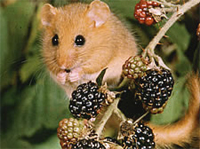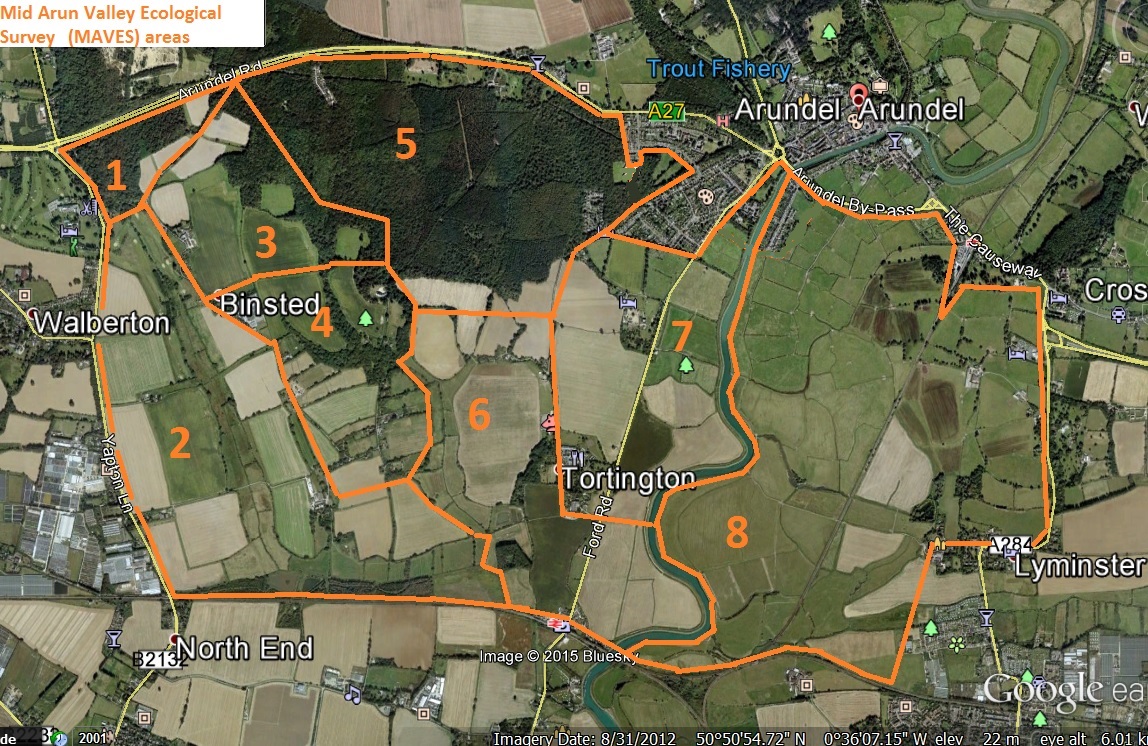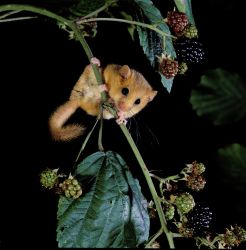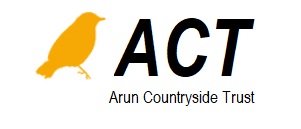 Ian Powell, dormouse surveyor of many years' experience, commented at a MAVES committee meeting that what was being found in the Mid Arun Valley Survey area could 'rewrite the textbooks on dormice'. What is known about dormice is continually changing: they have been found around the country not just in woods and hedgerows but even up telegraph poles. Understanding what they feed on has also changed - it has been known for some time now that in addition to the well known foods such as hazelnuts and berries, they will also feed on aphids and caterpillars.
Ian Powell, dormouse surveyor of many years' experience, commented at a MAVES committee meeting that what was being found in the Mid Arun Valley Survey area could 'rewrite the textbooks on dormice'. What is known about dormice is continually changing: they have been found around the country not just in woods and hedgerows but even up telegraph poles. Understanding what they feed on has also changed - it has been known for some time now that in addition to the well known foods such as hazelnuts and berries, they will also feed on aphids and caterpillars.
Tony Whitbread, Chief Executive of the Sussex Wildlife Trust, agreed. The different types of habitat in the survey area, particularly in areas 1, 3, 4 and 5, where ancient woodland and connected hedgerows many of which are also ancient, give opportunity to find more about dormouse use of these habitats. It was important to understand and conserve the habitat area of woodland and hedgerows as a whole.
Experts such as Dr Dawn Scott at Brighton University are studying new DNA approaches to understanding dormouse populations. These illustrate the need for a sufficient, sustainable scale and diversity of population.
Mike Tristram commented that dormice had already been found in Binsted by surveyors in areas 1 3 and 5 but had also been reported by a resident in a hedgerow in the south end of area 4. This tallied with the fact that on Mike's farmland on the downs, professional surveyors had found dormice nesting in an ancient hedgerow a long way from substantial woodland.
MAVES has the opportunity to investigate, through detailed survey of the hedgerows in our area, how important the connections are to other hedgerows and woodland, how important are the age and diversity of the hedgerows, and what is the effect of the management of the adjacent fields.
MAVES is fortunate to have the support and interest of a number of licensed dormouse surveyors. The committee is seeking grants for the purchase of 100 dormouse boxes: these can cost about £10 each. Donations from the public would also be most welcome.


